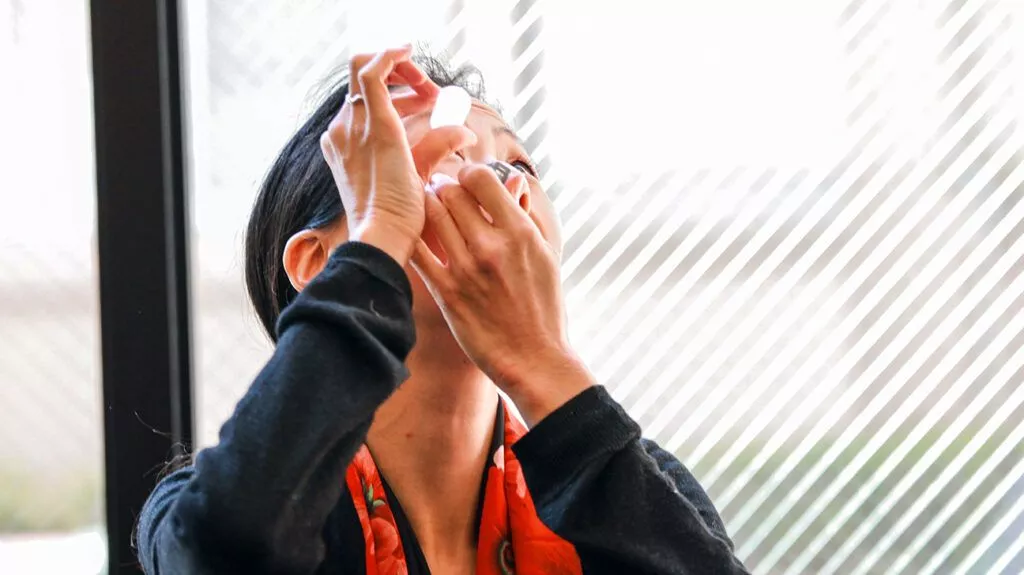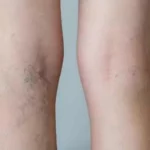What Is Fungal Eye Infection?
Contents
Fungal eye infections are a rare condition and can be severe, which potentially leads to vision loss.
People who are at higher risk of developing eye infections is resulting eye injury, plant material such as sticks, thorns, or a leaf.
If Infection and inflammation occur of the cornea known as mycotic keratitis, which leads to pain, and vision loss, and is a major reason for blindness worldwide.
Depending on the injured portion, fungal infections may cause fungal keratitis, scleritis, or endophthalmitis.
There are many different types of fungi that can cause eye infections including:
- Filamentous
- aspergillus (a fungus that lives in indoor and outdoor environments)
- non-filamentous fungi
- fusarium (a fungus that lives in the environment, especially soil and on plants)
- candida (human skin and mucous membranes are normally home to yeasts live on our skin and mucous membranes)
Approximately 1 million people are affected by fungal keratitis annually, and 8 – 11% of patients lose their eyes as a result.
Check Out – Improve Eyesight With 8 Natural Ways – At Home
Reasons for Fungal Eye Infection
Most of the patients use contact lenses, that is they are myopic.
If the use of contact lenses and the fluid is not stored properly, then the fluid has got contamination, resulting in an eye infection can develop.
There are other several reasons for final eye infection including:

Pink eye
It is also known as conjunctivitis caused by infectious, a common eye problem, and usually does not require treatment.
Pink eye is caused by an infection due to bacteria, the conjunctiva is a loose connective tissue that lies over the white part of the eye.
Check Out – Best Fast Ways To Treat Pink Eye (Conjunctivitis) – At Home
Blepharitis
It is a common eye condition that affects both children and adults, making your eyelids swollen, red, itchy, and irritated (2) (3)
If you have dandruff, rosacea skin condition), oily skin, and allergies issues then you are more at risk of it (4)
Eyelid Cellulitis
It is a common bacterial infection, and children are more likely to develop it, which causes redness, inflammation, and pain overlying the eyelid.
Commonly caused by an injury to your eye tissues and bacterial infections such as sinus infections.
Keratitis
It is caused by inflammation of the cornea (a clear outer layer at the front of the eye).
Keratitis is primarily caused by an infection that can be caused by viruses, fungi, bacteria, and parasites, and isn’t always allied with infection.
People who wear contact lenses, have eye injuries, have a weak immune system, and live somewhere humid and warm are more likely to develop it.
Ocular Herpes
It occurs when the eye is infected by the herpes simplex virus (HSV-1) it’s often just called eye herpes, and cold sores.
And considered a serious condition, the event can lead to vision loss, and eye herpes is contagious.
Sty
It occurs due to an infection of the oil glands on your eyelash follicle or the eyelid becomes blocked and gets infected.
It is also known as a hordeolum, where a red bump occurs on your eyelid edge, similar to an acne pimple.
Sty often lead to itchy eye, there are several other reasons for itchy eyes including:
- Perennial allergies
- Infection
- contact lenses
- airborne irritants
- eyestrains
Endophthalmitis
It is a severe swelling of tissues or fluids in the interior of the eye, commonly caused by a bacterial and fungal infection.
In India (a topical region) 10–20% of cases are caused by fungi, and in the US, and Europe most all cases are caused by bacteria (5)
Uveitis
Uveitis is an inflammation inside the eye, it usually happens when your immune system is fighting with infection.
Sometimes, It goes away quickly but can come back, and sometimes stays for a long time, which can affect both eyes.
Uveitis can cause pain, sensitivity to light, redness, and vision loss (6)
Symptoms of a Fungal Eye Infection
Fungal eye infections are similar to other types of eye infections that can show up anytime from several days to weeks.
The sign and symptoms of fungal eye infection include:
- Eye pain
- blurred vision
- redness
- inflammation or swelling in the eye
- watery eyes
- different fluid discharge
- itching
- excessive tearing
If you have seen these signs and symptoms for days, then you need to consult the doctor, it may be another eye illness (7)
Is pink eye a fungal eye infection?
Yes, pink eye is also known as conjunctivitis, as we know that fungal eye infection is caused by bacteria, viruses, parasites, etc.
Viruses and bacteria are the major reason for the fungal eye, which comes into the infectious pink eye category.
However, the person may get pink eye by allergic conjunctivitis which is most observed in the spring and summer (8)
This is known as Non-infectious pinkeye among others includes:
Varies types of drugs can cause pink eye like – antibiotics eyedrops, and antiviral medicines, which can promote allergic conjunctival.
Air pollution, exposure to the chemical, and contact with chlorine in pools.
People with allergic to something that may become a triggering thing that leads to pink eyes like pollen, animal dander, etc.
Weak EyeSight: Causes, Signs, How To Improve, And Do, and Don’t
Diagnose of fungal eye infection
To diagnose a fungal eye infection, the doctor will check your eye status by taking fluid from your eye as a sample (9)
This sample now goes to the laboratory to examine under a microscope or among other faster forms of machines.
Treatment of Fungal eye infection

Fungal eye infection treatment depends on what type of fungus, its seriousness, and which part of the eye is affected.
There are several treatments but make sure to consume them by consulting your doctor including:
- Antifungal eye drops
- medications
- antifungal medication that injects into the eye
- surgery
Topical amphotericin B is an effective treatment of choice for infectious due to candida and-related fungi.
While topical natamycin is the best choice for keratitis related infectious due to filamentous fungi.
All types of fungal eye infections have different treatment, which should not be ignored, early diagnosis make big difference.
Prescribe treatment includes medication by mouth, or through a vein, and several eye drops, In serious cases, surgery may be needed.
One of the medications is – Voriconazole which plays a vital role in the management of fungal endophthalmitis and keratitis.
A study where voriconazole, posaconazole, and ravuconazole drugs were used has been shown safe and effective.
Home-Remedies
Make sure, before using any home remedy on your own, consult your doctor, because eye infections can be serious.
There are several home remedies that are effective for eye infections and can ease symptoms including:
Saltwater
It is one of the most effective home remedies for treating eye infections but too much salt is similar to teardrops.
The study shows that salt has antimicrobial properties, which naturally clean eyes.
Green Tea bags
Green tea is high in antioxidants and vitamin C protects your skin from UV rays, which protects you from major diseases like skin cancer.
It is well famous for its detoxing properties and also acts as an excellent moisturizer, which reduces dryness, or swelling of the eyes.
For the best result, place tea bags in a cold place, then used them on the eyes, which can also be so satisfying, and relaxing.
Colostrum
First-time breast milk is released by the mammary gland after giving birth is called colostrum (10).
Newborn babies are more likely to develop eye infections, so breast milk is an effective way to prevent babies from an eye infection.
It has several nutrients which are very good to contain antibodies, and antioxidants to build a newborn baby’s immune system.
It is also called liquid gold, because of its rich yellow color, due to being thicker than regular breast milk (11)
Warm compresses
A warm compressor reduces pain, by soothing the swelling and draining away any blockages (12)
Put warm compresses above your eyelid above the melting point for meibomian gland secretion and aid in expression.
The study showed warm compresses and artificial tears effectively reduce eyelid swelling and discomfort.
Other Home-Remedies
- Cold compresses
- honey
- wash linens
- euphrasia is prescribed medicine to treat irritative, allergic, pink eye, and other eye issues.
- castor Oil
- essential oils
Prevention Tips
To prevent fungal eye infection, check out below essential tips (13) include:
- Avoid wearing contact lenses frequently
- if you are workers who work in the field, so wear protective eyewear to prevent an eye injury
- Avoid tap water because it may contain Acanthamoeba spp.
- patients should avoid homemade contact lens solutions
- eye makeup material or make-up brushes can become a reason for eye infection
- Avoid touching eyes frequently
- do not touch your eyes with a dirty hand, first clean them up
Down Line
Fungal eye infection is a common illness, that can easily treat with some prescribed medication and home remedies.
There are many reasons for fungal eye infections, if you have seen any redness, or discomfort in the eye, then you should talk to the doctor.
People who wear contact lenses frequently, are allergic, and children are more prone to an eye infections due to frequent touch eyes.



